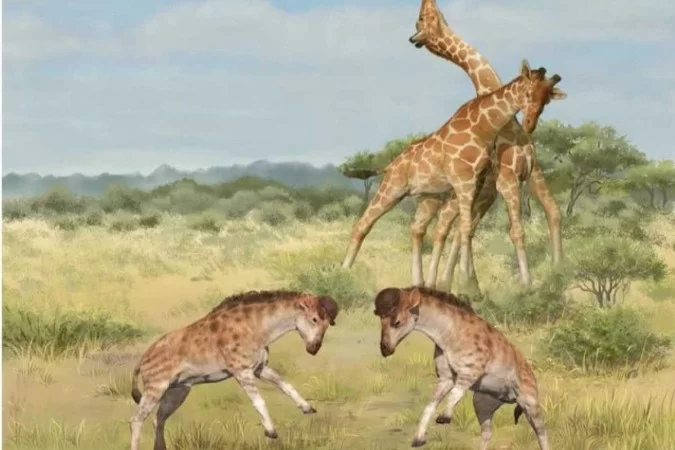 |
|
| Credit: WANG Yu and GUO Xiaocong |
What do giraffes use their long necks to feed on long foliage everyone knows. But what scientists are not sure of yet is how they evolved to develop such a long neck. A study published in Science on Thursday (2) suggests that this happened so that they could compete for females.
Scientists at the Institute of Vertebrate Paleontology and Paleoanthropology of the Chinese Academy of Sciences came to this conclusion after analyzing a peculiar primitive geofossil, Discokeryx xiezhi, found on the north bank of the Junggar Basin, Xinjiangem, China, and dated from. Early Miocene about 17 million years ago. A complete skull and four cervical vertebrae were part of the find.
Through the analysis, the researchers note that the cervical vertebrae are very strong and have the most complex joints between the head, neck and between the cervical vertebrae of any mammal. Moreover, the complex joints between the skull and cervical vertebrae have been specially adapted for high-speed direct impact.
According to the study, it is possible that among the ancestors of giraffes during this period, mating males developed a way to attack competitors by shaking their necks and heads. This conflict, underpinned by sexual selection, led to the rapid dilation of the giraffe’s neck over two million years to become the current genus, the giraffe.

“Wannabe internet buff. Future teen idol. Hardcore zombie guru. Gamer. Avid creator. Entrepreneur. Bacon ninja.”
